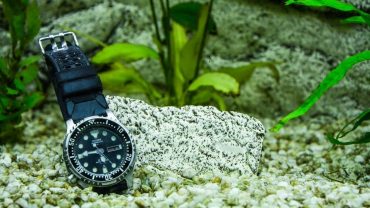How To Lower pH In Aquarium?
The pH level plays an essential role in your aquarium since it makes sure your fish can get sufficient oxygen to thrive in the water. In many cases, this factor might be increased due to some environmental changes, which would cause your fish to have low energy or appear ill. Fortunately, there are a few simple methods that you can try at home to resolve this issue. Keep reading to learn more about these useful tips.
Why is pH level important?
Sudden changes in the level of pH in a tank could be harmful or fatal to your fish. When this factor increases, it will raise the toxicity of some chemicals like ammonia.
These conditions are especially hard on sick or young fish. That’s why it is essential to check it regularly and make proper adjustments to create an ideal living condition for your fish.
There isn’t a normal pH which could be applied to all fish since they originate in oceans, lakes, streams, rivers, or ponds with different levels. Their needs will depend on the species.
For example, saltwater fish thrive in an alkaline environment with a pH of more than 8, while freshwater fish prefer a lower range, from 5.5 to 7.5.
How to lower pH in aquarium
There are basically three ways to reduce the pH level in your fish tank.
1. Add driftwood and natural elements
If you want a quick and natural method, then consider adding one or two pieces of driftwood, which can be found in any pet store. It can work as a natural filter by eliminating components raising the pH level. Choose those items produced for aquariums without preservatives, chemicals, or dyes.
Before putting into the aquarium, you should soak or boil the driftwood to sterilise and prevent it from colouring the water. Ideally, you can leave it for a few years to reduce the pH level.
Peat moss is another option which can serve the same purpose as driftwood. However, it requires a bit of preparation to ensure safety when using in your fish tank.
Put the peat moss in a pantyhose or filter bag so it won’t float and work effectively. You should replace it after 6 to 12 months or once it begins to look damaged or old.
You can also use two or three almond leaves. In addition to lowering the pH level, they can prevent illnesses and keep fish healthy thanks to anti-inflammatory properties.
They also create natural hiding areas and add a touch of beauty for your aquarium. All you need to do is spreading them on the tank bottom and replace after 6 to 12 months. Almond leaves are available in most pet stores in dry strips.
2. Use a reverse osmosis system
A reverse osmosis system or filter is typically designed with a semi-permeable membrane to purify the water. This device works by removing heavy irons like chlorine, lead, and water pollutants, thus leaving smaller irons and clean water to reduce pH levels.
While it is a bit costly to purchase these filters, they can be a great solution in the long term.
Reverse osmosis filters are often divided into three main types, depending on the number of filtration stages. These include:
- 2-stage units: They are a great option if your aquarium is small and has limited space around. These are also affordable devices to consider.
- 3-stage units: They are larger and ideal for bigger aquariums. While these models are costlier, they can last longer.
- 4-stage units: These are the best and most expensive filters that you can purchase for your tank. They come with effective filtration processes and large construction.
If you don’t know which type is suitable for your fish tank, then ask for advice from a salesperson.
3. Clean and maintain the water in your aquarium
Cleaning the aquarium may help to keep ammonia from building up and increasing the levels of PH in water. Ideally, you should do this at least once per week.
Simply use a scraper to remove any algae on the aquarium items or walls, then replace 10% to 15% of the water with de-chlorinated, fresh tap water. Next, eliminate the gunk, leftover food, or fish waste on tank decorations and graves with a syphon.
You should also check the filter to make sure it still runs properly. If it appears dirty or clogged, clean and rinse all components to remove debris or gunk. In case they are too old or get damaged, you should replace the carbon packages, cartridges, or sponges.
Another important task to keep the levels of pH in your fish tank low is to change the water regularly. Ideally, you can do a partial change every five days (around 30% of water) or every day (about 10% of water). Remove the water with a syphon, then add fresh, de-chlorinated water into the tank.
Watch this video to learn more about cleaning your aquarium:
How often should you check pH in your aquarium?
It is recommended to test the level of pH in your fish tank once per month to detect any issue quickly before it becomes severe. Test kits can be purchased at any local or online pet store. You should keep the test results in a log notebook for future reference.
Since the pH level can vary at different times of the day, you should do the test at the same time, preferably after noon. Other situations when you need a pH test include adding natural items, replacing water, or a fish illness.





